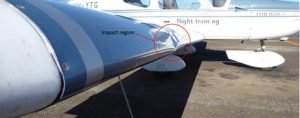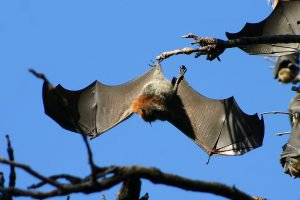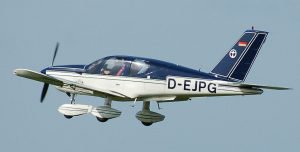SOCATA TB-10, Image By Huhu Uet (Own work) CC BY three.zero
Yet one other extensively reported drone strike has been de-bunked, with DNA testing proving the flying object to have been a gray-headed flying fox – a bat.
A July 11 report by the pilot of a SOCATA TB-10 Tobago plane that he had collided with some object throughout last strategy at Parafield Airport in South Australia was extensively reported as a drone strike. The pilot himself thought first that he had hit a chook -but not discovering any chook stays on the
wing after touchdown, concluded that the article was a drone and reported the incident as a attainable drone strike.

picture: ATSB
As the drone trade is aware of solely too effectively, “probably,” or “possibly” morphs rapidly into “deadly drone strike” when mainstream headlines take over. But on this case, DNA proof was used to conclusively show the innocence of drone operators within the space.
Kudos to the Australian Transport Safety Bureau (ATSB) , who determined to swab the realm across the injury on the wing of the aircraft, and have the swabs had been examined for DNA by the Australian Museum.

By Mike Lehmann (Own work) [GFDL]
The checks decided that the beforehand alien craft was a gray-headed flying fox – the most important bat in Australia, weighing as much as 2.2 kilos and touring as much as 50km from their roosts to feed.
Despite claims that drone and airplane collisions are a frequent drawback in Australia and elsewhere, Chief Commissioner Greg Hood stated “wildlife strike was the most common occurrence reported to the ATSB,” in a media report on the incident.
“Last yr there was a complete of 1954 incidents and accidents involving plane collisions with wildlife reported to the ATSB. Our analysis has discovered that bats and flying foxes, swallows and martins, kites, and lapwings and plovers are essentially the most generally struck sort of flying animal.
“We will continue to provide information to pilots, aerodrome and airline operators, regulators, and other aviation industry participants on managing the risks associated with bird and animal strikes as part of our focus on improving transport safety.”
That being stated, it’s unlikely that birds – or bats – will come beneath the identical public scrutiny that drones have any time quickly.
 Unmanned Aerial Vehicle The latest drone news
Unmanned Aerial Vehicle The latest drone news




